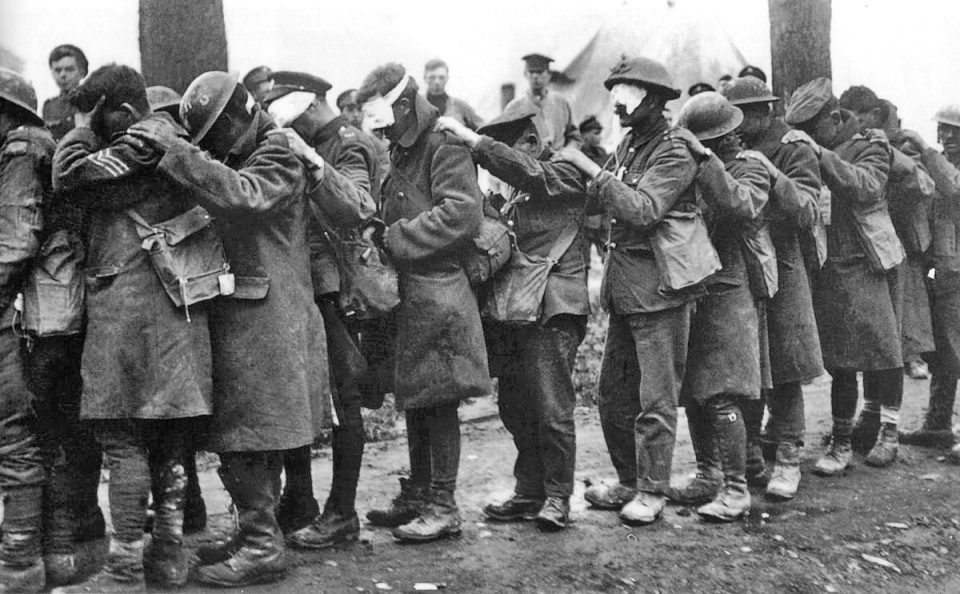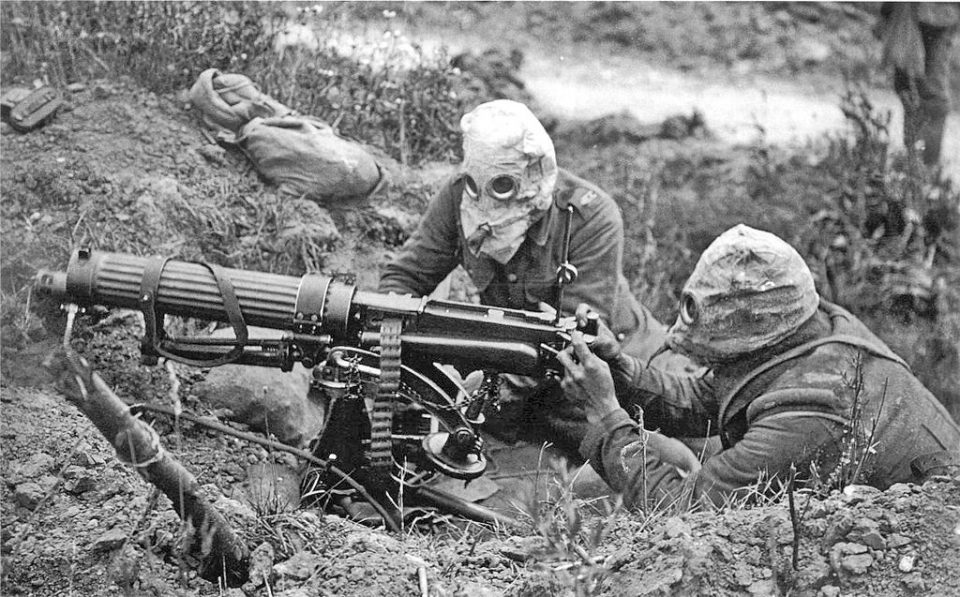
(Eagle News) – World War 1 which started on July 27, 1914, also known as the “Great War,” lasted for more than four years, during which time more than 20 million died and another 21 million were injured.
World War 1 lasted until November 1918, and by accounts, some eight to nine million soldiers died in the “war to end all wars” as it was described then. On the other hand, about 13 million civilians or non-combatants died during that war where chemical gas was first used as a weapon.
This was one of defining factors of World War 1. It was also the first time in history, where war was waged on land, sea and on air.
Observers of history note how the killing advanced in the years leading to 1914 where chemical or poison gases were used for the first time to kill troops.
“While the efficiency of maiming and killing steadily advanced from the 17th to the 20th centuries it accelerated by an order of magnitude in WWI with the use of inhaled poison gasses,” noted James Patton, a military historian and a US army veteran, who had written several articles about World War 1.
“One of the enduring hallmarks of WWI was the large-scale use of chemical weapons, commonly called, simply, ‘gas’. Although chemical warfare caused less than 1% of the total deaths in this war, the ‘psy-war’ or fear factor was formidable. Thus, chemical warfare with gases was subsequently absolutely prohibited by the Geneva Protocol of 1925. It has occasionally been used since then but never in WWI quantities,” he wrote in the article, “Gas in the Great War” which was published in the website of the University of Kansas Medical Center.

-3 chemical gases responsible for most injuries, deaths: chlorine gas, phosgene, mustard gas-
There were three chemical gases which were responsible for most chemical-weapons-related injuries and deaths during World War I: chlorine, phosgene, and mustard gas, according to a Science History Institute article, “A Brief History of Chemical War” written by Sarah Everts as published in its website sciencehistory.org.
Chlorine gas was used on the infamous day of April 22, 1915 in Ypres, western Belgium by the Germans, in what is now known as the Second Battle of Ypres which in its entirety, or until May 25, 1915, had killed 59,000 British soldiers (including 6,500 Canadians), 22,000 French, and 35,000 Germans.
This was the first large-scale use of a chemical gas by the Germans on the Western Front.
Chlorine was the first to be tried out by the German gas warfare program then headed by Fritz Haber (1868 – 1934). Haber was even there at the Second Battle of Ypres on April 22, 1915 when the gas was first released by the German military in Belgium. He also helped develop gas masks with adsorbent filters that could suposedly serve as protection against such poison gases.
Chorine is two and a half times denser than air. “pale green in color and with an odor which was described as a ‘mix of pineapple and pepper’.”
It was deadly against unprotected soldiers, said Patton, a World War 1 feature writer, in the article “Gas in the Great War” that was published by the University of Kansas Medical Center.
He estimated that over 1,100 were killed by that first use of chlorine gas by the German’s in Ypres.
The gas “produces a greenish-yellow cloud that smells of bleach and immediately irritates the eyes, nose, lungs, and throat of those exposed to it. At high enough doses it kills by asphyxiation,” read the article published by the Science History Institute.
Phogene, a much deadlier gas, was then used by Haber for the German gas warfare program.
The gas smelled like moldy hay, but was also an irritant. It was six times deadlier than chlorine gas. But phosgene is a much stealthier weapon, because “it’s colorless, and soldiers did not at first know they had received a fatal dose,” said Everts’ article “Brief History of Chemical War” published by the Science History Institute in its website sciencehistory.org.
This was how it described the effects of this gas on the victims: “After a day or two, victims’ lungs would fill with fluid, and they would slowly suffocate in an agonizing death.”
It was the Germans who were the first to use phosgene on the battlefield, but it also became “the primary chemical weapon of the Allies.” This gas, invented by the German chemist Haber, was responsible for 85% of chemical-weapons fatalities during World War I.
Another chemical gas first used in World War 1 was mustard gas, a potent blistering agent, which was also caled as “King of the Battle Gases.”
“Like phosgene, its effects are not immediate. It has a potent smell; some say it reeks of garlic, gasoline, rubber, or dead horses. Hours after exposure a victim’s eyes become bloodshot, begin to water, and become increasingly painful, with some victims suffering temporary blindness. Worse, skin begins to blister, particularly in moist areas, such as the armpits and genitals. As the blisters pop, they often become infected. Mustard gas could also contaminate land where it had been deployed,” the science history website said.
It said that the “exposure sensitized victims and that further exposure even at lower doses produced symptoms.”
“Mustard gas caused the highest number of casualties from chemical weapons—upward of 120,000 by some estimates—but it caused few direct deaths because the open air of the battlefield kept concentrations below the lethal threshold,” the science article said.
-French troops first to use tear gas in War-
But the first chemical gas to be used in the war was “tear gas” as early as a month into the war.
It was the French forces which first deployed the tear-gas grenades in August 1914.
They used 26 mm grenades filled with ethyl bromoacetate in August 1914. The small quantities of gas delivered, roughly 19 cm³ per cartridge, were not even detected by the Germans
In October 1914, the German forces fired 3,000 shells containing dianisidine chlorosulfate, considered a lung irritant, at the British army at Neuve-Chapelle.
The British were “unaware that they had been subjected to a chemical attack because the chemical is incinerated by the explosive charge” noted the article, a “Brief History of Chemical War” published by the Science History Institute.
Not long after, chemical gases or poison gases were then used throughout World War 1.
-Young Hitler temporarily blinded in gas attack in Oct. 1918-
It was in June 1918, that the Allies started using mustard gas on the German forces.
Everts even wrote that “a young Adolf Hitler, an enlisted messenger in the trenches at Werwick near Ypres, (was) temporarily blinded during a gas attack” on October 13 to 14 in 1918.
In the same article, she said Hitler was evacuated to a military hospital in eastern Germany and spent the rest of the war recuperating.
On November 11, 1918, World War I ended with 1.3 million casualties caused by chemical weapons, including 90,000 to 100,000 fatalities, primarily from phosgene, the Science History Institute article noted.
-Ironies surrounding head of German gas warfare program in WW1-

Photo Courtesy the Nobel Foundation – http://nobelprize.org/chemistry/laureates/1918/index. Public Domain photo.
Ironically, Haber, who headed the German gas warfare program, and was responsible for the first use of chlorine gas, and later invented the deadlier phosgene, later also invented the so-called “Haber Process” which earned him a Nobel Prize for Chemistry, in 1919, a year after World War 1.
Haber, also known as the “father of chemical warfare” also invented the gases that were later used in the Holocaust during World War II that killed millions of Jews, including his own relatives, about a decade after his death in January 1934.
Patton pointed out these ironies in his article, “Gas In the Great War.”
“The ironies of gas warfare are vividly focused in the life of Fritz Haber, the German chemist who invented phosgene and also the ‘Haber Process’ which allowed fixation of atmospheric nitrogen into ammonia-based fertilizer. A German Jew who converted to Christianity, he received the Nobel Prize for Chemistry in 1919 for the Haber Process. Though long dead before The Holocaust, he was one of the chemists who perfected the hydrocyanide-based insecticides Zyklon A and Zyklon B, the latter gas used to kill millions of Jews and others, including some of his relatives,” Patton wrote in the article that appeared in the University of Kansas Medical Center website.
(Eagle News Service)








